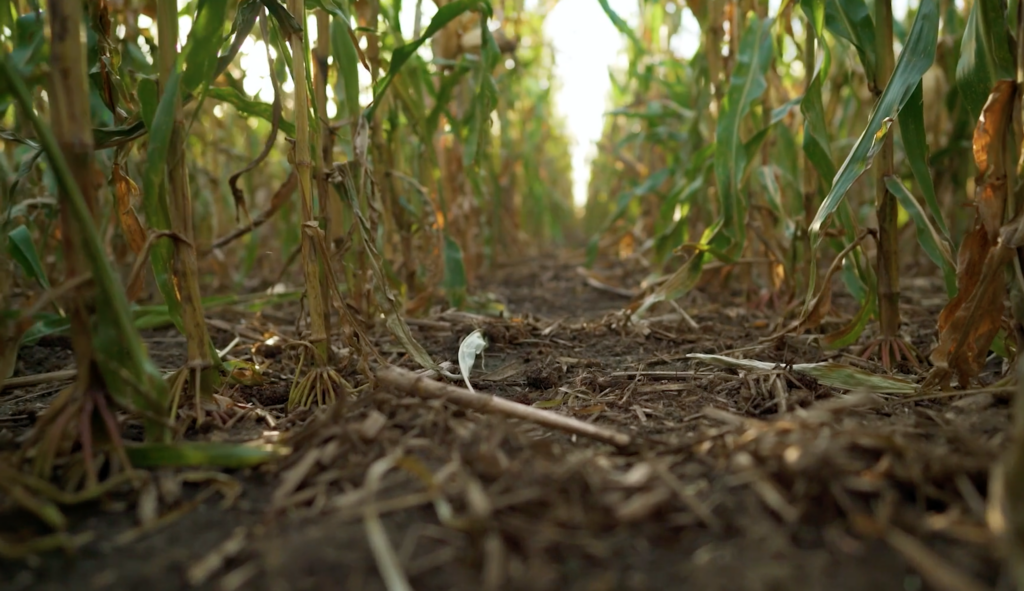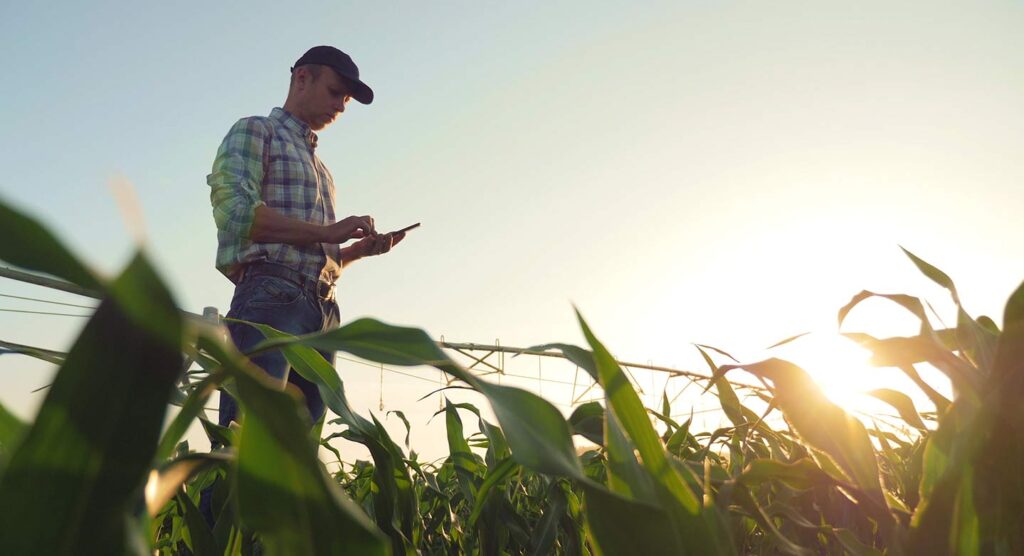Gevo is creating a system to reward farmers for climate-smart agriculture practices.
Powered by Verity Tracking, our program aims to create critical structural climate-smart market incentives for low-carbon-intensity corn as well as to accelerate the production of sustainable aviation fuel to reduce the sector’s dependency on fossil-based fuel. The program will focus on creating a market for carbon insets and sharing tools with farmers to help quantify the carbon intensity (CI) reductions.
Climate-smart ag practices are at the heart of Gevo’s program to develop and commercialize sustainable aviation fuel. It’s the farm-grown feedstock that delivers the carbon, drawn from the atmosphere, that is a key ingredient to make hydrocarbons that serve as aviation fuel.

Carbon insets create a value proposition for a product based on traceable, high-quality carbon intensity within a value chain of partners and customers. By allowing carbon intensity or other attributes to be valued, quantified, and ascribed to the final product, insets drive continuous improvement and efficiency over the whole process because the result is retained. For example, an airline that buys SAF to blend into its fuel gets the benefit of the renewable energy used in the production process, and the carbon sequestration that resulted from sustainable farming practices.
By contrast, offsets are a mitigation strategy for what are often unrelated value chains. Think of a company buying carbon credits to offset emissions generated by their business system. The funds spent on the carbon credits are used to support projects that absorb carbon dioxide from the atmosphere, such as planting trees. Carbon offsets are effective and credible only when they are linked to robust actions and are transparent in their implementation to remove or reduce emissions.
Sustainability Begins in Farm Fields

Farmers raise No. 2 yellow dent corn in huge quantities. These farmers are stewards of the land, and understand how to get the most out of their land. Their land is their asset to make money, and they are always looking for ideas that will help their land produce sustainably. Like any business, farmers pay attention to trends and collect data. They use modern science and technology—and it has been helping them to increase the yield of each acre, preserve water, and enrich their soil, which allows them to reduce fertilizer use and other inputs.
Gevo will provide a market-driven approach to reduction of CI using climate-smart agricultural practices and defossilization of the input energy for the production of agriculturally based products including ethanol. Farmers and other value-chain participants who contribute to lowering carbon intensity will be financially rewarded for their efforts. Thus, helping to make improvements on the path to net-zero carbon emissions energy and liquid transportation fuels.
Growing Soil Means Creating a Valuable Resource for Future Generations

Sustainable farming techniques and regenerative agriculture are key to capturing carbon and improving yield.
- By using no-till and low-till farming techniques, farmers keep the stover in the fields and the roots of last year’s crops in the soil. Next year’s corn is planted in rows that are offset enough that organic material is added to the mineral soil, making for a richer blend. The additional organic matter feeds soil microbes and represents amplified sequestered carbon, drawn down from atmospheric carbon. Measuring this carbon sequestration is part of the equation of reducing the carbon intensity of every gallon of fuel.
- Fertilizer is expensive for farmers to buy and apply to their fields. Purchasing the nutrients and employing the labor and equipment to spread them costly, and over thousands of acres, it adds up. By leaving the organic matter from last year’s corn and diverse cover crops in the soil, that field also preserves nutrients from last year, held in the root and stalk of the corn and cover crops left in the field after harvest, as well as the microbial biomass represented as soil organic matter that holds more water, more nutrients and aerates the soil.
- High-potency microbial soil amendments—or soil “probiotics”—can be used to stimulate enhanced crop vigor, increased nutrient uptake, enhanced photosynthesis, and the substantial expansion of crop roots.
- Using manure in place of synthetic fertilizer helps farmers use a widely available resource that carries nutrients from the feed back to the soil, along with additional organic matter. And manure is even better if it has been through a biogas digester that removes the methane for use as an energy source.
- Soil health analysis is another tool available to farmers, to focus their efforts on needed improvement areas.

Argonne GREET and the Way Forward
The Argonne GREET model was developed to assess carbon intensity related to the energy and environmental effects of fuels and vehicle technologies. GREET can accommodate variables for better land management. As an agricultural feedstock supplier implements these practices, the carbon intensity for the fuel made from its harvest is adjusted, and that value can go back to the farmer. Verity Carbon Solutions incorporates GREET into its platform to help ensure that the smart agricultural practices employed by our partner farmers will be properly credited.
On December 15, 2023, the U.S. Department of Treasury released its guidance on the 40B sustainable aviation fuel (SAF) tax credit, which expressed its intent to use the Argonne GREET model.
“Gevo greatly appreciates the Biden Administration’s intent to use the Argonne GREET method and model for sustainable aviation fuel (SAF),” said Dr. Pat Gruber, CEO of Gevo, Inc., about the release of the U.S. Department of Treasury’s guidance. “Today’s guidance is a much-needed step forward for SAF investment and innovation. Designating GREET for the 40B credit sets an accurate, science-based precedent for transparent carbon accounting across the SAF supply chain, from farm fields to the end use of the fuel.”
“The details and certainty matter,” Gruber continued. “Therefore, we look forward to reviewing the complete GREET update upon release to ensure it maintains the data-driven integrity, especially on indirect emissions, necessary to support SAF investment, properly value agriculture’s contributions, and cut aviation emissions. We also thank the Administration for its advocacy for climate-smart agriculture and the tools and policies that recognize and account for U.S. farmers’ stewardship of the land and contribution to cleaner flight.”
Important Information Relevant to the release of the U.S. Department of Treasury’s guidance on the 40B sustainable aviation fuel (SAF) tax credit:
- SAF with greenhouse gas emissions that are least 50% lower than conventional aviation fuel will qualify for tax credits created by the Inflation Reduction Act (IRA).
- The current Argonne National Laboratory Greenhouse Gases, Regulated Emissions and Energy use in Technologies (GREET) lifecycle analysis method and model, with its Carbon Calculator for Land Use Change from Biofuels Production (CCLUB) and its Feedstock Carbon Intensity Calculator (FD-CIC) tools, enables more precise measurement of SAF carbon intensity, accurately counting carbon reduction benefits of agricultural feedstocks at the field level.
- The Department of Treasury is expected to release a final GREET model that will be used for the tax credit no later than March 1, 2024.
- Gevo believes science-based methodologies must account for emissions reductions of feedstock production, encompassing climate-smart agriculture, to acknowledge and incentivize carbon reduction efforts across the value chain.
- A growing market for SAF made from low-carbon feedstocks is expected to open up new markets for American farmers to sell their products.
For more information on the Treasury Department’s guidance, read the release here, and to learn more about Gevo’s focus on carbon accounting, visit www.gevo.com/ira.

Scaling SAF Production the Right Way
Think of a tank of Gevo’s advanced bio-based renewable fuels as a battery that stores renewable energy. All the additions to the fuel’s carbon score measured by the GREET modeling are taken into account, because this metric tracks carbon emissions and sequestration from all steps of the process, including the final combustion of the fuel:
- Every gallon of Gevo advanced renewable fuel coming from sustainably grown corn sequesters more carbon in the soil than is contained in the fuel itself.
- The carbon dioxide that’s released when the fuel is combusted is in turn consumed by the cornfields as millions and millions of corn stocks grow from seed to more than six feet tall, storing energy in every stalk and root, leaves, soil microbes and most importantly, every grain in every ear of corn.
- Gevo uses renewable energy in our production process, including the incorporation of wind power turbines for electricity.
- To generate the heat needed for our fermentation processes, we expect to produce biogas created from manure digesters and wastewater treatment, and combined heat and power (CHP) systems that use the heat from the process of electricity generation. This biogas, once refined into renewable natural gas (RNG) is also suitable for use in the natural gas grid, another market for our business.
- Because our wind turbines are expected to produce an abundance of renewable no-carbon electricity, we also plan to make green hydrogen.
- All renewable energy sources reduce our carbon intensity and put energy into the battery that are the liquid fuels that are ready to drop into any existing vehicle, engine, or system that runs on conventional petroleum-based fuels.
